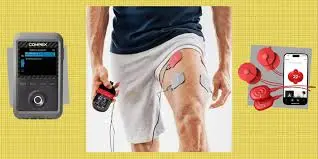Best Muscle Stimulators for Recovery, Strength, and Pain Relief
If you’ve ever come home from a long day at work with sore legs, finished a tough workout at the gym, or dealt with nagging back pain after hours at a desk, you know how much your body craves relief. While stretching, massages, and hot baths are helpful, technology has introduced another effective tool: muscle stimulators. These small but powerful devices are being used everywhere from professional sports facilities to living rooms at home—to support recovery, boost strength, and ease discomfort.
In this article, we’ll explore how they work, why people across different walks of life are using them, and what to look for if you’re considering adding one to your routine.
How Muscle Stimulators Work
At their core, muscle stimulators use gentle electrical impulses to contract and relax muscles. This technology, often referred to as electrical muscle stimulation (EMS), might sound complex, but it’s actually straightforward. When the electrodes are placed on your skin, the impulses mimic the signals your brain naturally sends to your muscles, encouraging them to activate.
This stimulation helps increase blood flow, reduce stiffness, and even strengthen muscles when combined with a consistent fitness plan. Athletes use them to enhance training, office workers use them to relieve tension from sitting all day, and even physical therapists rely on them to help patients recover after injury.
A great everyday example: imagine a delivery driver who’s been on their feet for ten hours. Using a muscle stimulator on their calves can ease tightness and restore circulation. Similarly, a weekend runner can target sore quads after a long trail session to speed up recovery.
Everyday Benefits Across Different Lifestyles
One of the reasons muscle stimulators are gaining popularity is their versatility. They’re not just for bodybuilders or professional athletes; almost anyone can benefit from them.
- For fitness enthusiasts: Muscle stimulators can complement strength training by targeting smaller or harder-to-reach muscles. For example, a weightlifter might use them on their shoulders after heavy presses to reduce fatigue and encourage muscle growth.
- For office workers: Sitting for long hours can cause tight hip flexors and stiff backs. A quick session with a stimulator during breaks can help relieve tension and make it easier to focus.
- For parents and caregivers: Carrying children, lifting groceries, or simply juggling a busy household can take a toll. A stimulator offers a practical way to soothe sore muscles without booking a professional massage.
- For recovery and rehabilitation, Physical therapists often use EMS to help patients regain strength after surgery or injury. It’s a gentle, controlled way to reintroduce activity to weakened muscles.
What makes these benefits more compelling is how they fit seamlessly into daily routines. You can use them while watching TV, reading a book, or even working on your laptop.
Choosing the Right Stimulator
Not all muscle stimulators are the same, and it’s important to choose one that matches your needs. Here are a few things to keep in mind:
- Intensity settings: Look for devices that allow you to adjust the strength of the pulses. Beginners might start with lower settings, while athletes may need stronger stimulation.
- Portability: If you travel frequently or need something portable for the office, a compact and wireless model is ideal.
- Target areas: Some stimulators are better suited for larger muscles, such as the thighs and glutes, while others are designed for smaller areas, like the shoulders or arms.
- Ease of use: Simple controls and clear instructions go a long way in enhancing usability. You don’t want to fumble with complicated settings when all you want is quick relief.
A smart way to decide is to think about when and where you’ll use it most. If you’re mainly looking for relaxation after work, you might prioritize comfort and simplicity. If you’re chasing athletic performance, focus on features that support intense sessions.
The Role of Muscle Stimulators in Modern Recovery
In many ways, muscle stimulators are part of a bigger shift in how we approach health and wellness. People today are more proactive about caring for their bodies—whether that’s through fitness, nutrition, or stress management. Technology has made it easier than ever to access tools that were once reserved for clinics or professional athletes.
It’s also worth noting that EMS has been studied and recognized in various fields, including physical therapy and sports science, demonstrating its wide-reaching value. As with any health tool, results may vary depending on how consistently and correctly it’s used, but countless people have found it to be a game-changer in reducing discomfort and supporting long-term strength.
If you’re curious to explore options, you can check out some of the Best Muscle Stimulators available today that combine effectiveness with convenience.
Final Thoughts
Muscle stimulators aren’t a magic cure, but they’re an incredible support system for anyone looking to improve recovery, enhance strength, or manage daily aches and pains. Think of them as a partner to your healthy habits—something that complements your workouts, stretches, or even your moments of relaxation.
Whether you’re an athlete chasing peak performance, an office worker fighting stiffness, or someone who simply wants to enjoy a pain-free evening after a long day, muscle stimulators can make a real difference. By selecting the right device and using it regularly, you’ll provide your body with the care it deserves.
As our understanding of technology and wellness continues to evolve, tools like these are becoming as common in households as foam rollers or yoga mats. And the best part? Relief is just a button push away.

